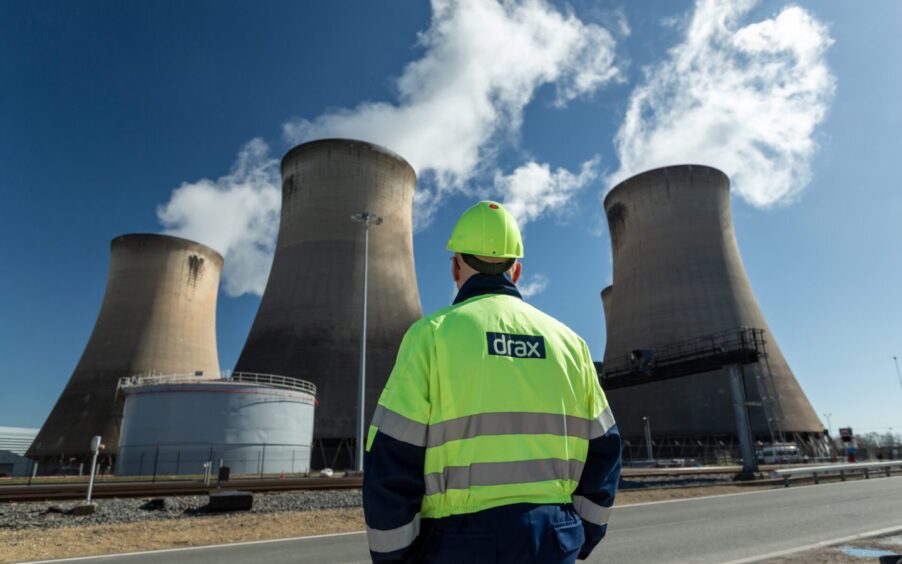 © Image: Drax Group
© Image: Drax Group Drax Group (LON: DRX) has secured a contract-for-difference (CfD) for its biomass power plant in Selby, North Yorkshire, to operate beyond 2027.
However, its £2 billion plan to capture carbon from the burning of biomass – mostly wood pellets – has to await further support from the government.
The FTSE-250 firm’s shares closed 3.78% higher on Monday, to 659 pence per share, despite the subsidy effectively being halved and new sustainability requirements imposed on the operator.
Drax still needs a separate subsidy, most likely a dual CfD structure, to convert the plant to bioenergy with carbon capture and storage (BECCS), as well as a confirmed route to transport and store carbon.
The announcement “gives surety that we can continue to procure fuel, keep people employed and continue critically generating power (to the 2030s)”, a Drax spokesperson said.
“In the absence of that, we would be in a different position,” he said. “We are still waiting for these other decisions to enable that project to happen (BECCS).”
The new subsidy, which will last through to March 2031, includes “tough new measures on sustainability”, according to energy minister Michael Shanks.
Drax must “increase the proportion of woody biomass that must come from sustainable sources from 70% to 100%”, Shanks said in a statement.
Subsidy cut in half
The UK government has agreed to provide a fixed price of power, known as a strike price, of £113 per megawatt-hour (as per 2012 prices) for all four biomass units at the power station from 2027.
Drax said it will keep all four units operating after March 2027, subject to the parliamentary procedures.
The company previously had a strike price of £100/MWh approved for the third biomass unit at the power station in 2016 when it fully converted to biomass.
“Under the new arrangement, Drax will be supported to operate at a maximum load factor of just 27% – operating less than half as often as it currently does,” Shanks said.
“When renewable power is abundant, Drax won’t generate, and consumers will benefit from cheaper wind and solar instead.”
According to the government’s analysis, consumers will be saved £170 million in subsidies each year over the course of the agreement “compared with the alternative of procuring gas in the capacity market”, Shanks added.
The latest subsidy was awarded following a consultation launched by government in January 2024 on supporting large-scale biomass generators when existing support ends in 2027.
That month, the Drax BECCS plan was granted development consent by Claire Coutinho, then the Conservative energy secretary.
There is no confirmed route for the carbon captured from burning wood pellets to be transported yet available for the project, the Drax spokesperson said, though the Viking cluster and Northern Endurance Partnership are exploring potential pipelines through the Humber.
“At the start of 2024, the government awarded track one status to Hynet and Teesside, which meant the Humber was left out,” said the spokesperson.
The absence of a clear way of storing carbon at the Selby plant meant the Drax BECCS project was pushed back to the early 2030s, while the UK has said it will end support for unabated biomass combustion from 2027.
“The whole point of today’s announcement is to solve that issue, of what happens to Drax in absence of (BECCS) after 2027,” the spokesperson said.
Drax said it believes that the development of new markets for biomass, particularly in North America, is supportive of biomass pricing.
Consultancy Baringa estimates that the latest subsidy arrangement for the Drax biomass power station will save between £1.6 billion and £3.1bn of savings to consumers.
Drax chief executive Will Gardiner said the framework is “an investment in UK energy security, which will result in a net saving for consumers and support the delivery of clean power 2030”.
